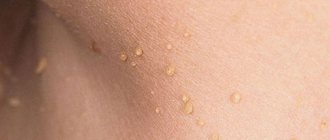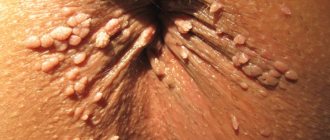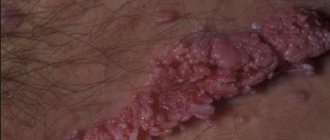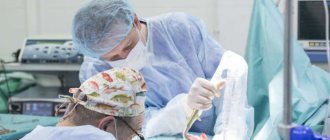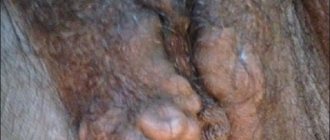Very often, patients with dermatologists become patients who have condylomas, papillomas or warts. These skin diseases are caused by the human papillomavirus. The virus itself does not pose a direct threat to life, but therapy aimed at destroying it must be comprehensive. In addition to drugs used for local action on formations on the skin, it is necessary to take complexes that help increase the protective properties of the body. It is against the background of decreased immunity that a person becomes infected with the virus.
Why should condylomas be treated? Firstly, the virus can begin to actively develop, affecting an increasingly larger area of skin. Secondly, neoplasms can cause pain and discomfort and limit movement. Another important aspect is psychological: a person begins to be embarrassed about his appearance, he develops complexes and the level of dissatisfaction with himself increases.
general information
Condylomas are a benign tumor formation that is “located” on the epidermis or mucous tissues and looks like warts and papillae. Single specimens (about 7 mm) or entire “colonial formations” (up to several tens of mm) of condylomas settle on the body of women and men and often resemble cauliflower in appearance. The color of these substances ranges from flesh-colored to brown. Condylomas are viral in nature, so such problems can even occur in children (during childbirth from an infected mother). As long as the growth has not reached the epidermis, the person does not pose a threat to others; the risk of infection increases if the growths are located in the epidermal layer. Condylomas are usually divided into two types:
- wide;
- pointed.
In the first case, condylomas in women and men look like a mushroom with a cap and a wide stalk and are most often a consequence of secondary stage syphilis. Condylomas of the genital type are transmitted through sexual relations; the human papillomavirus (HPV), which is activated under certain conditions, is involved in their appearance. The main location of genital warts is the genitals and oral cavity. Condylomas in women settle on the outer and inner parts of the labia, in the vagina, clitoris and anus. Warts and papillary growths in men select the glans penis and frenulum of the foreskin.
More information about the drug
"Solcoderm" is a medicine used for the local treatment of certain skin diseases, including condylomas. The main active ingredients are acids (lactic, nitric, oxalic and acetic). It also contains copper nitrate.
When the medication is applied to the affected areas of the epidermis, the process of nitric acid oxidation begins. The protein shell of the virus folds under the influence of acids, and the pathogen itself dies. As a result, cells affected by the virus die and are rejected by healthy tissue.
It is important to know that when applying the drug to healthy skin, a chemical burn occurs. Therefore, therapy with Solcoderm should be carried out on an outpatient basis. In the case of home treatment, the patient must be informed of all risks. It is not allowed to independently apply the medication to growths formed on the mucous membranes of the genitals, mouth or near the eyes - this can cause serious consequences.
Reasons for appearance
“What causes condylomas?” - a question that worries patients with a similar problem. The route of infection with condylomas is through unprotected sexual contact. Moreover, these include traditional intimate relationships, as well as oral, anal and homosexual relationships. Children get the disease from sick women while moving through the birth canal. Do not be negligent about household methods of infection. There is no need to take risks and use other people’s personal belongings, especially bath accessories (washcloth, towel, flip flops, etc.). Condylomas are activated under the influence of certain factors:
- indiscriminate unprotected sex;
- early onset of intimate relationships;
- sexual contacts with partners with condylomas or HPV carriers;
- decreased immune abilities of the body;
- previous diseases of the genital tract;
- frequent stress, vitamin deficiency;
- sloppiness and failure to comply with personal hygiene rules.
The appearance of genital warts is often associated with HPV. Human papillomavirus infection poses a great danger for the development of cancer. Condylomas of this etiology are the object of study and treatment by doctors of different specializations: in women - by gynecologists, in men - by urologists. If the location of condylomas is in the anal area, then a proctologist leads the patients. You should definitely consult about genital warts, because the development of the disease can occur in a variety of ways - from self-healing to the degeneration of condylomas into malignant formations. The specialists of the Global Clinic Center have accumulated positive experience in solving such problems, so contacting the clinic is a prerequisite for successful treatment of the patient.
Is it possible to remove condylomas with celandine?
Celandine juice contains substances that can destroy tissues affected by the papilloma virus. In principle, this traditional method of treatment works, but it is low in effectiveness (it will take several days to remove the wart) and is useless for large, numerous condylomas. Modern medicine offers more effective treatment methods, one of them is radio wave surgery.
What happens after removal of condylomas using radio waves?
A small wound remains at the site of the intervention. As a rule, it heals completely within 5–7 days, and new pink skin appears in its place.
How to properly care for the wound after surgery?
After removing condyloma using radio wave surgery, potassium permanganate and other aggressive agents should not be used, and the wound should not be allowed to dry out and form a crust on it: the best cosmetic effect is achieved with moist healing.
What can and should be done:
- In the first days, carefully monitor the condition of the wound.
- Treat it with warm soapy water.
- Take a bath and shower.
- Drink enough fluids.
- Consult a doctor immediately if pain begins to bother you, lumps appear, or skin color changes.
What not to do:
- Tear off the crust if it still appears. This can cause a noticeable scar to form.
- Apply cosmetics to the wound.
- Visit swimming pools, baths and saunas until the wound has healed completely.
- Keep the wound in the sun and visit solariums.
- Press on the wound, injure it.
You will receive more detailed recommendations from your doctor at the clinic. Feel free to ask questions.
Is additional treatment necessary after genital wart removal?
Genital warts are a viral disease, so removing them alone is not enough. If the virus remains in the body, it can cause a relapse. The risks increase if you have a weakened immune system, have chronic diseases, or if you often change sexual partners. In order to cope with the pathogen, the doctor will prescribe antiviral drugs and agents that strengthen the immune system.
Is it possible to remove condylomas during pregnancy?
Pregnancy and breastfeeding are contraindications to the use of radio wave surgery. It is better to get rid of genital warts at the planning stage. Other contraindications to the use of the Surgitron device: severe diseases of the heart, lungs and other organs, acute infections, the presence of a pacemaker, exacerbations of chronic diseases, epilepsy, cancer, infectious and inflammatory processes on the skin. If a woman is having her period, she will have to wait until it ends.
To find out if there are any contraindications in your case, visit a doctor at the ProfMedLab clinic.
How can one reliably diagnose human papillomavirus infection in genital warts?
Genital condyloma is easily recognized during an external examination by any dermatovenerologist. The doctor may order additional tests:
- A Papanicolaou smear (PAP test) helps detect abnormal cells.
- PCR detects the genetic material of the pathogen in smears and scrapings.
- The Digene test helps detect high cancer risk viruses and assess the risk of a malignant tumor.
Removal of genital warts using radio waves using the Surgitron device is a quick, low-traumatic and painless procedure. You can take it at the ProfMedLab clinic. To make an appointment with a doctor, call: +7 (495) 120-08-07.
Symptoms
The main manifestation of growths is their unpleasant and repulsive appearance. But women will also be reminded of condylomas by other unpleasant moments. The time elapsed from the first contact-infection to the moment when condylomas become clearly visible can be completely different. Sometimes a week or a month is enough for condylomas to appear; in other situations, years may pass. The incubation period depends on the general health of the woman or man, their immunity, lifestyle, etc. Condylomas in women and men cause itching and burning in the genital area and near the anus. This occurs during the period of germination of condylomas; in the future, such symptoms may disappear. An increase in the amount of whitish discharge, sometimes mixed with blood and an unpleasant odor, provokes condylomas in women, which are localized on the vaginal mucosa or cervix. When condylomas are found in the anus, the passage of feces can injure them and cause ichor.
Removing condylomas with liquid nitrogen
If a laser destroys condyloma by heating, then liquid nitrogen does this using low temperature. In the language of doctors, this is called cryosurgery. Compared to laser and radio wave surgery, it has a number of disadvantages:
- Usually a bubble remains at the intervention site, then it is opened, after which it takes about 2 more weeks to heal.
- It is more difficult to control the area of influence. Cold damages healthy tissue 1–2 cm around the condyloma.
- For 1–2 days after surgery, you experience quite severe pain.
Pathogenesis of genital warts
HPV is found in the cellular structures of the skin and mucous membranes, so it can be transmitted from men to women, from adults to children. The long latent period of infection makes early diagnosis of the disease difficult. Condylomas are not immediately visible to the naked eye. To activate HPV, a large number of these pathogens is necessary, only then the papillomavirus “comes out”, represented by genital warts. An increase in HPV may occur due to decreased immunity in women or men. Genital condylomas are caused by the process of atypical reproduction of the human papilloma virus; under its influence, epithelial cells grow and develop with pathology. The skin and mucous tissues change and this is how condylomas appear. Growths in the form of warts and papillae can be single or massive, turning into entire “conglomerates” of condylomas.
What consequences can condylomas lead to if they are not removed?
Condyloma is by no means a harmless neoplasm. The virus causes changes in cells that resemble those that occur in malignant tumors. Currently, the connection between human papillomavirus infection and cancer can be considered proven.
Genital warts often cause a host of other problems: they can become injured and bleed, ulcerate, and interfere with sexual intercourse and childbirth. In general, if growths in the form of warts are found in intimate places, it is better to immediately consult a doctor and have them removed.
Diagnostics
Human papillomavirus infection (genital warts) is diagnosed in different ways, from visual examination of women and men to the most advanced examinations. CM "Global Clinic" has in its arsenal the latest techniques for determining the nature of condylomas. Diagnostic methods used by doctors:
- Clinical examination. Some types of diseases in women and men can be masked, taking the form of genital warts, so you need to have sufficient qualifications to differentiate different problems.
- Colposcopy is recommended for women, and urethroscopy for men.
- A smear will tell a lot about condylomas in women and their nature; this cytotest will also help to exclude cervical dysplasia.
- Histology.
- Diagnostics-PCR. This examination not only detects the presence of human papillomavirus, but also determines its type.
- Immunological research. It is used to detect antibodies to HPV in the blood.
All women and men affected by genital warts must be tested for infectious diseases of the genital area (syphilis, HIV, etc.)
Radio wave removal procedure
Radio wave removal of condylomas begins with preparatory measures. These include the following:
- Consultation and examination by a gynecologist;
- Determination of HPV type and concomitant infectious diseases;
- Blood test for HIV, syphilis, hepatitis;
- If necessary, colposcopy (examination of the affected area with a colposcope) and biopsy (histological examination of removed tissues is carried out after the procedure in order to clarify the diagnosis and exclude a malignant disease).
The removal operation itself is performed under local anesthesia: injections of anesthetics, a gel or a spray with an anesthetic effect can be used for these purposes. After performing anesthesia, the doctor proceeds directly to the removal - this is carried out with a radio knife, without contact with the patient’s skin. The method is based on the fact that high-frequency radio waves generate a large amount of thermal energy. The cellular fluid heats up, the structure is destroyed - the cells that are exposed immediately evaporate. Heat allows not only to “evaporate” the cells, but also to “seal” small vessels, which reduces the risk of bleeding and infection to zero and ensures rapid healing.
Skin lesions must be completely removed to prevent their reappearance. The area where the manipulation took place is treated with an antiseptic solution, and if necessary, an ointment application is carried out.
Treatment
Condylomas and HPV require a systematic approach to treatment.
Medication
To combat condylomas in women and men, doctors act in three directions:
- against viruses;
- in order to increase immunity;
- for fortification of the patient.
Cycloferon and inosiplex act against HPV activation and its reproduction. Inferon and allokin-alpha stop viruses and help restore the immune system. To improve the general health of women and men, Immunal, Amixin, Poludan, etc. are prescribed. A complex of vitamins and minerals is also an essential component of treatment for condylomas.
Local
Condylomas are successfully treated using ointments and sprays of antiviral action (epigen-intim, condylen, etc.). Women and men will not have to think about condylomas if they are treated with inquimod, podophyllotoxin. For pregnant women, you can use trichloroacetic and nitric acids. Women need to fight condylomas in stages: first remove them, and then, or in parallel, act to reduce the number of viruses. Often (in every third woman) condylomas enter the stage of relapse (especially if preventive measures are not followed and the recommendations of the attending physician are ignored).
Removal
Methods for removing condylomas in modern medicine are varied:
- Electric coagulation. This method has disadvantages - many contraindications, painful procedure and long recovery.
- Cryotherapy. Condylomas are removed using liquid nitrogen. The positive aspects of this technique are the absence of scars, painless effects, and the absence of anesthesia.
- Surgical method. The growths are removed during surgery, and stitches are placed at the site of the wounds. Doctors use local anesthesia.
- Use of chemicals. This method is contraindicated during pregnancy and lactation.
- Laser therapy. Condylomas are removed with a laser beam; this is a treatment that does not affect healthy cells and leaves virtually no scars.
- Radiosurgical method. The use of a special device helps remove condylomas without contact with the body. Removal of growths is accompanied by simultaneous sealing of blood vessels. This technique is one of the most modern and in demand.
Advantages of the method
Removing condylomas using the radio wave method has many advantages:
- Low-traumatic - ease of tissue dissection without the usual scalpel, no impact on the upper layers of the skin, no mechanical damage to capillaries and tissues;
- The ability to control the depth of exposure of the radioknife, as well as the area of impact on tissue - allows you not to affect surrounding healthy tissue;
- No rough scars after the procedure, which is especially important for patients planning pregnancy;
- Timely coagulation of blood vessels, which reduces the risk of bleeding and swelling;
- Speed (no more than 30 minutes) and high efficiency of the procedure, quick rehabilitation period;
- Antiseptic effect of radio waves - reduced risk of infection, inflammation;
- Painless due to the lack of impact on sensitive receptors;
- Complete removal of affected tissue; minimal possibility of their reoccurrence
- Possibility of removing condyloma of any location;
- Preservation of high quality material for further laboratory research.
However, despite the advantages, radio waves may be contraindicated in some cases.
Preventing HPV infection
Condylomas must be prevented by preventive measures:
- use of contraceptives during sexual relations;
- increasing immunity;
- proper balanced nutrition;
- taking vitamins;
- compliance with hygiene standards;
- fight against bad habits;
- increasing stress resistance.
Regular visits to the doctor are a good preventative measure. The use of antiviral ointments, as well as vaccination against HPV, is prevention that will make people’s lives full.
Pregnancy and condylomas
Condylomas are an alarming signal for pregnant women. HPV in the body of the expectant mother does not have a harmful effect on the fetus, but such a lady must be under the supervision of the attending physician at all times. You can resort to removing growths only at the 28th week of pregnancy, not earlier. If the formations have settled on the genitals, then there is a high probability that the baby will acquire HPV while passing through the birth canal. If the infection is not treated, then the unpleasant moments associated with thrush increase in pregnant women. The best option is a thorough examination before pregnancy for HPV and, if it is detected, mandatory and complete treatment.
Recovery after deletion
After the doctor removes the condylomas, he will definitely explain the features of the recovery period. In the vast majority of cases, no complications are observed if you follow the specialist’s recommendations for 4-6 weeks:
- Avoid visiting baths, saunas, swimming pools, beaches, solariums;
- Prefer a warm shower to a hot bath;
- Limit physical activity, eliminate heavy lifting;
- Maintain sexual rest
- Use pads and avoid tampons;
- Don't drink alcohol.





